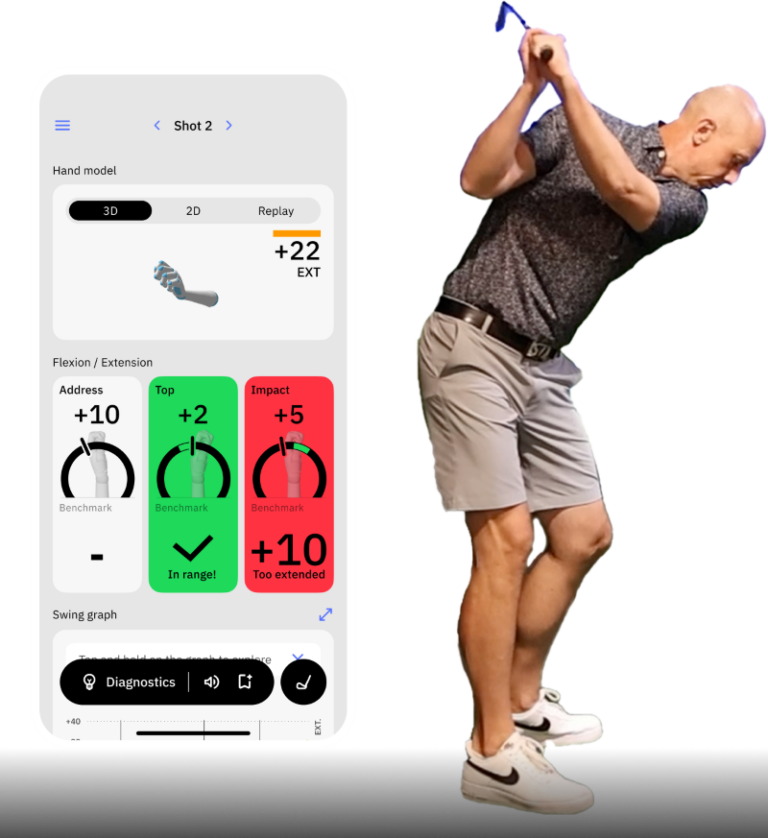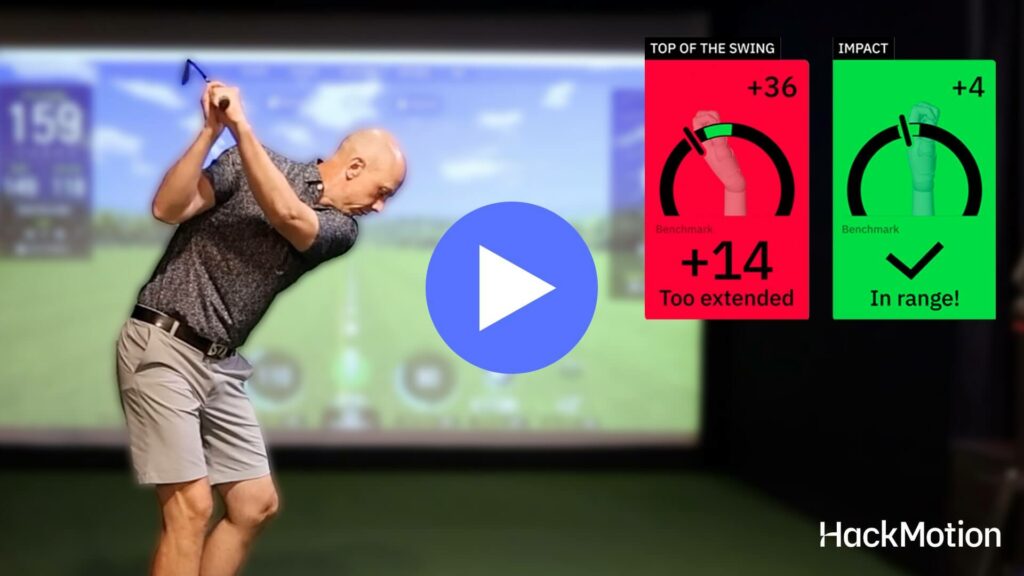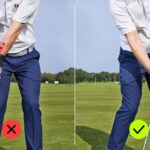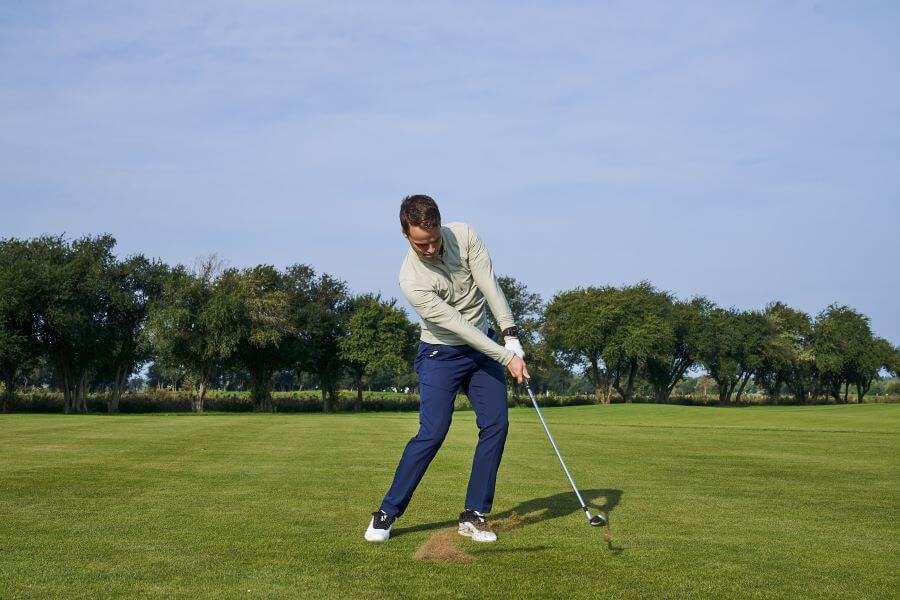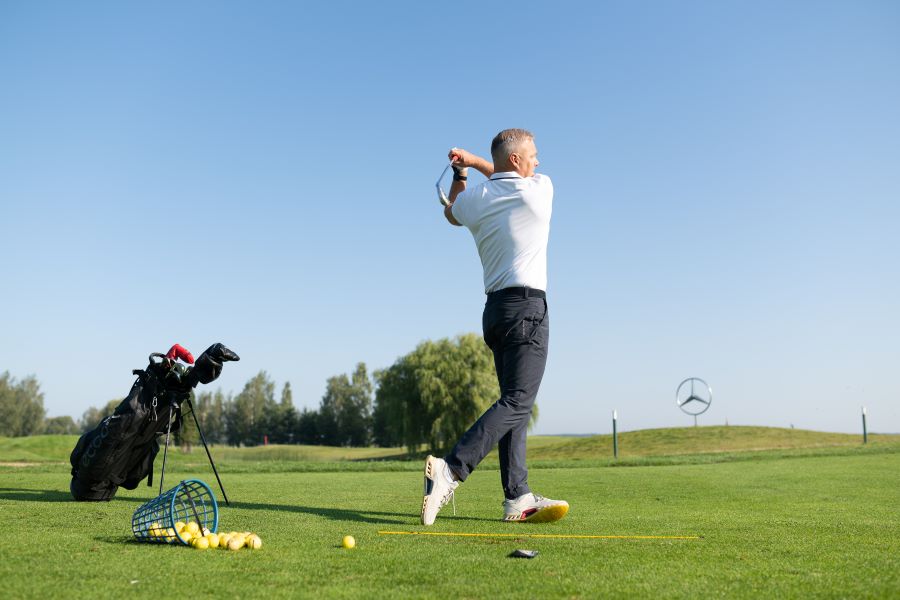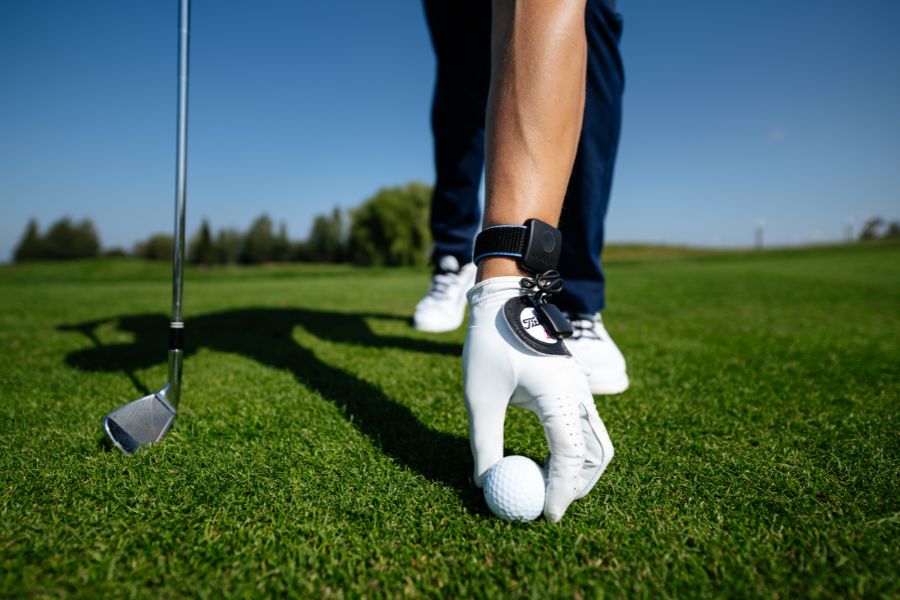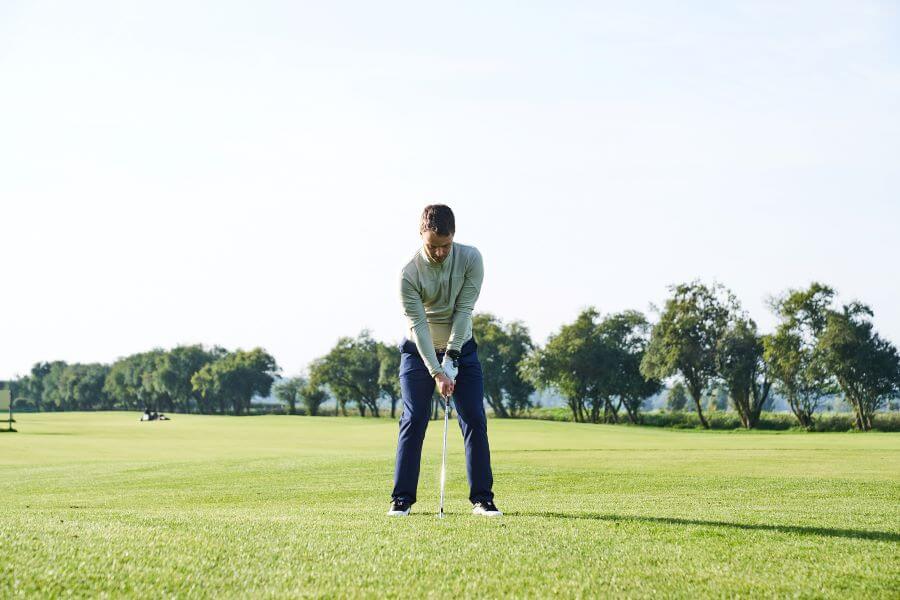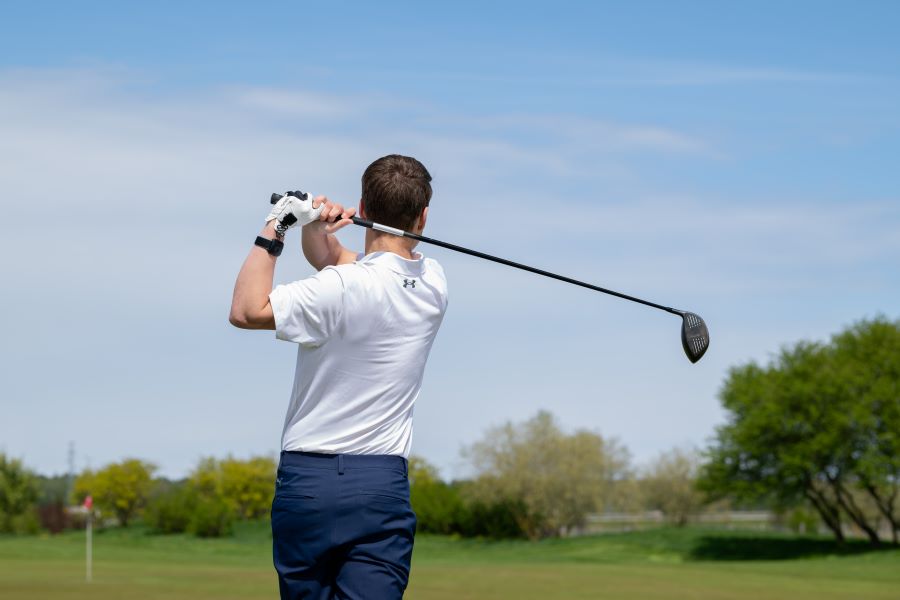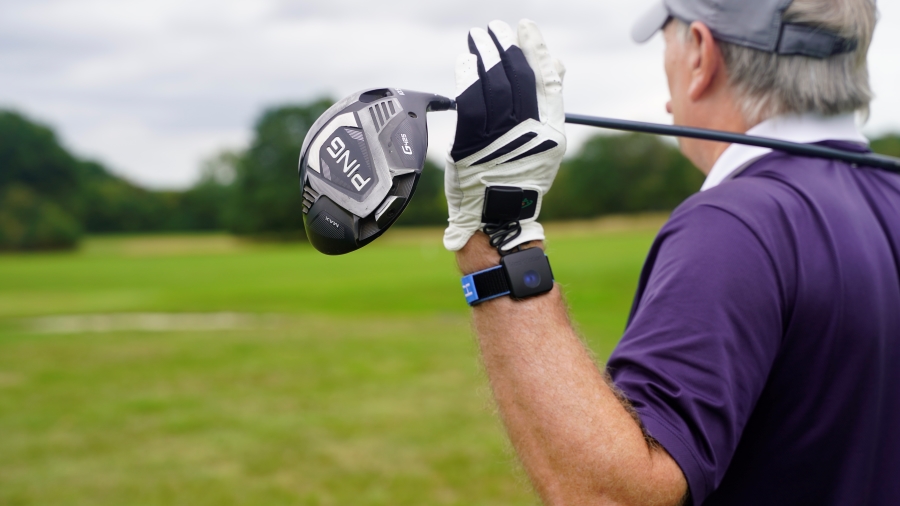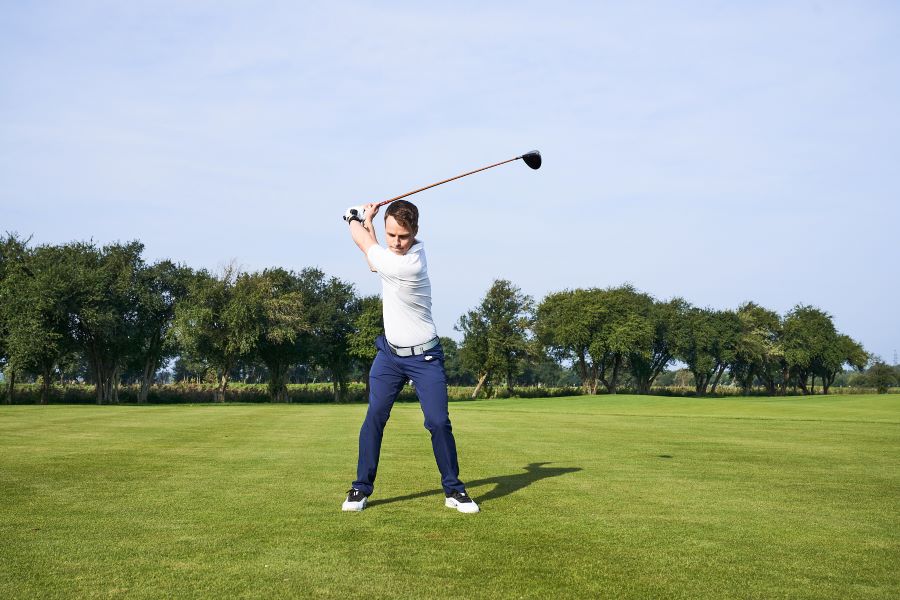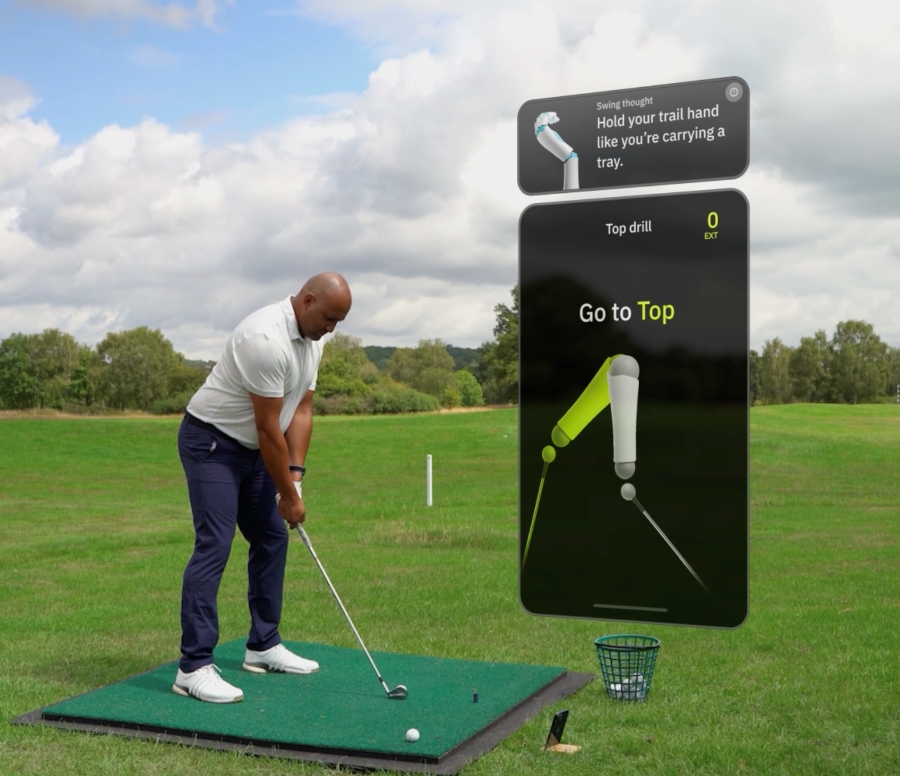How to Hit a Low Golf Shot: 6 Simple Tips & Drills to Stay Under the Wind
Learning how to hit a low golf shot can save many strokes and get you out of many jams on the course. You can also avoid headwinds and still make great scores.
It’s a valuable skill that many amateur and high-handicap golfers think is reserved for experienced golfers, but in reality, with a few adjustments, anyone can control their flight.
Here are the best tips and a few drills to help you add this shot to your arsenal and avoid any nerves that can be associated with playing from tough spots or in inclement weather.
How to Hit a Low Golf Shot (Key Takeaways)
- Ball back in your stance to encourage striking it with a delofted clubface.
- Choke down on the club to boost your control of the clubface.
- Forward shaft lean at address promotes a closed clubface at impact.
- Shorten your swing to reduce velocity and spin.
- Increase wrist flexion at impact to deloft the clubface and prompt a low flight.
- Accelerate through impact to prevent the ball from lifting off the clubface.
Contents
6 Actionable Tips for Hitting a Low Golf Shot
The first step to hitting lower shots is to learn what is happening in your swing to produce the lower trajectory.
Do not proceed to the drills until you have studied and understand these pro tips that will explain exactly what needs to happen in your setup, swing, and follow-through.
Move the Ball Back in Your Stance
Moving the ball back in your stance is dependent on which club you are using.
It will be easier to lower the flight of clubs that already have a lower loft, such as 4, 5, and 6 irons. But you can lower the flight of your mid and short irons as well by adjusting the ball position.
If you usually position your ball a ball width inside your lead heel, then move it back another ball width to lower the trajectory. However, with your short irons, you only need to move it back a half-ball width to lower the flight.
Remember, you won’t be able to hit stingers with your 9-iron, so lowering the flight of that will be subjective. By moving the ball back, you will lower the flight, but only in comparison to its normal flight.
Position More Weight on Lead Leg
Hitting lower shots means delofting the club, but there are right and wrong ways to do this.
The first step to delofting the club is to lean the shaft a bit more forward, but not by excessively pushing your hands forward.
You only want this to be a component of hitting it low. If you focus more on putting your weight forward, then your shaft will lean forward more naturally.
When you’re in your normal setup position, add 10-15% more weight on your lead foot. By doing this, your whole body will shift forward, including your shaft lean.
Be sure to keep your weight here during the swing. Many golfers tend to move their weight back in the backswing. Fight this urge and keep your weight forward to reduce loft in a natural and repeatable way.
Increase Wrist Flexion At Impact
Much like chipping, you want your hands to be ahead of the ball through impact to create low shots. If you release like normal, then you apply the correct loft, and your ball flight won’t change.
Using Hackmotion is the most effective way to incorporate this crucial move in your swing.
Hackmotion helps with many aspects of your game, but its delicate sensors are perfect at detecting small moves that the naked eye can’t see.
Work on flexing (or bowing) your wrists before contact to shallow the shaft and close the clubface. Ideally, your wrists should carry greater flex than your setup position, where a small dose of extension is required.
A closed clubface delofts the golf club and enhances your ability to launch the ball low, avoiding wind and obstacles.
Choke Down on The Club
Doing this alone will not help you lower your ball flight. Choking down on the club only helps guide the club to the ball and deliver a lofted angle for a low-launching shot.
The shortened setup does cost clubhead speed, which should be fine since the aim is to strike the ball cleanly with a closed clubface and hit a low shot that will most likely roll out more.
In addition, choking down on the club will restrict your ability to unload at the top, helping you reduce your backswing for improved control. You can see how legendary coach David Leadbetter grips down on a club and plays an easy punch shot in the clip below.
Shorten Your Swing
Keeping your swing compact will help you hit all the other checkpoints in your swing.
It will also help you keep your swing plane flat and prevent excess backswing that could cause your ball to rise while in mid-air.
Focus on rotating your shoulders and hips, but don’t worry about your hands getting past your shoulders. Again, you don’t need distance when trying to hit low shots because you will most likely make up for it with roll.
- Focus on rotating your hips and shoulders to move your arms
- Maintain weight distribution
- Only allow your hands to go as high as your shoulders
- Shorten follow-through as well
Stop Your Hands Rapidly Post Impact
To hit lower golf shots, Tiger Woods suggests speeding up your hips through impact. As your hips accelerate through contact, it forces your hands around the body, stopping them lower than usual.
Halting your hands rapidly after contact prevents you from lifting the golf ball into the air and gaining excess height.
Instead, you strike the golf ball with downward force, imparting reduced spin to produce a low-flying shot.
3 Proven Drills to Hit Lower Golf Shots
As long as you work on incorporating the tips above, you can work on hitting lower shots at the driving range.
But if you have a bit more time and want to expedite the learning process, dedicate some time to these drills that will force you to test the tips you’ve just learned.
Towel Compression Drill
Keeping your hands ahead of the ball at impact is crucial. This drill focuses on that and will also help you achieve better ball contact on all your shots.
Just be sure you are not swinging too steeply. You can use Hackmotion to monitor this because a swing that is too steep will create backspin, which encourages lift on the ball and will increase height.
- Video Timestamp: 2:40 – 5:23
Towel Compression Drill – Step by Step
- Lay a small towel down about eight inches behind your ball.
- After taking some practice swings, hit the ball without touching the towel.
- Even if you are doing this with ease, perform many reps and monitor your angle of attack and weight distribution.
- Once the drill becomes too easy, move the towel closer to the ball.
Hit Hard/Stop Quick Drill
This is a great drill to build off what Tiger Woods suggests with speeding up your hips.
If you’re hips are doing all the work, then your arms should be loose and easier to control. If you can control your arms (via your hips), you can hit lower golf shots.
- Video Timestamp: 10:44 – 14:15
Hit Hard/Stop Quick Drill – Step by Step
- Take your low-ball-flight setup and usual low-ball-flight backswing.
- On the downswing, focus on driving your hips through the impact zone.
- This will speed up your arms through centrifugal force and allow you to hit the ball hard.
- It should also allow you to stop quickly after contact and keep your hands low.
- Slowing down at the right time, just after contact, is a key point to hitting lower golf shots.
Motorcycle Drill
You can adjust your ball flight height as well as direction if you have great wrist control.
It’s very easy to learn this move and incorporate it into all your golf swings using Hackmotion. But if you don’t have the system yet, you can work on wrist control the old-fashioned way.
Motorcycle Drill – Step by Step
- Address the ball as usual and take your backswing.
- As you start down, gradually “rev” the wrists into flexion (like revving a motorcycle). By the time the club is parallel to the ground, you should have your desired lead wrist bend.
- Maintain that flexion and allow a natural release through the finish.
- Start slowly, then increase speed, being sure to preserve proper angles.
- Hit some balls with this feeling, but also rehearse it by stopping at impact without hitting to ingrain the position.
FAQ
When should I hit a low golf shot?
The best time to hit a low golf shot is into oncoming wind or when hanging branches lie in your way. A low golf shot allows you to escape trouble or keep your ball out of the wind, resulting in optimal distance considering your lie and the obstacles you will contend with.
Who should learn how to hit a low golf shot?
Every golfer, from scratch through to a 36 handicapper, should learn how to hit a lower golf shot. The quicker you learn to play the shot, the easier it becomes for you to escape trouble, get back in play, and continue your round.
What’s the quickest setup change to hit it lower?
Move the ball back about a ball width, place 60–70% of your weight on your lead foot, and set your hands slightly ahead of the ball. Choke down and make a 3/4 swing to a chest?high finish with smooth tempo. This de?lofts the club and reduces spin for a flatter flight.
Final Thoughts
Now that you’ve learned to hit a low golf shot, be sure to plan and apply it to your practice regimen.
Although not all tips may suit your swing or game, you should attempt all of them multiple times to get a solid grasp on how your swing will change.
For faster and more reliable results, use the Hackmotion system. The sensors relay information about your movements to the app, which evaluates the data and makes real-time suggestions based on your swing habits.
This system helps all aspects of your golf game, not just for hitting low shots. If you’ve ever wanted to work with a professional golf instructor but didn’t have the time or money, this is your answer.
